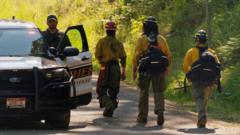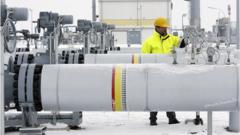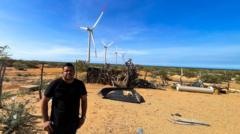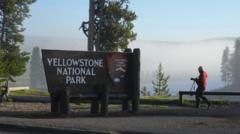Boise, Idaho, is setting a standard for sustainable energy by utilizing geothermal heat sourced from the earth. With nearly 500 buildings benefiting from this renewable resource, the city showcases a successful model for environmental solutions.
Boise's Warm Solution: Harnessing Geothermal Energy for Sustainable Heating

Boise's Warm Solution: Harnessing Geothermal Energy for Sustainable Heating
A deep dive into Idaho's use of geothermal energy reveals clean, efficient heating for nearly 500 buildings in Boise.
Boise, located in Idaho and known for its abundance of hot springs, has ingeniously tapped into this natural resource to implement the largest municipally run geothermal system in the United States. This innovative system warms a variety of facilities, including businesses, government offices, hospitals, and educational institutions, all benefiting from heat drawn from subterranean hot water reservoirs.
The geothermal system pools its heat from aquifers warmed by fault lines, elevating the water temperature to around 170 degrees Fahrenheit (77 degrees Celsius). This heated water is extracted via wells situated in nearby foothills, then circulated through a network of closed-loop pipes that extend into various buildings. Following its thermal journey, the water is routed back into the aquifer for re-heating.
Among the notable buildings utilizing this system is the Idaho Statehouse in Boise. It stands as the only state capitol in the U.S. to heat its facilities with geothermal energy. The system also keeps sidewalks warm during winter, effectively melting snow and enhancing the comfort for residents.
As a part of the "50 States, 50 Fixes" series, Boise's geothermal initiative serves as a prime example of local solutions to environmental challenges, spotlighting the shift towards cleaner, more sustainable energy practices that can be replicated across the nation.
The geothermal system pools its heat from aquifers warmed by fault lines, elevating the water temperature to around 170 degrees Fahrenheit (77 degrees Celsius). This heated water is extracted via wells situated in nearby foothills, then circulated through a network of closed-loop pipes that extend into various buildings. Following its thermal journey, the water is routed back into the aquifer for re-heating.
Among the notable buildings utilizing this system is the Idaho Statehouse in Boise. It stands as the only state capitol in the U.S. to heat its facilities with geothermal energy. The system also keeps sidewalks warm during winter, effectively melting snow and enhancing the comfort for residents.
As a part of the "50 States, 50 Fixes" series, Boise's geothermal initiative serves as a prime example of local solutions to environmental challenges, spotlighting the shift towards cleaner, more sustainable energy practices that can be replicated across the nation.




















